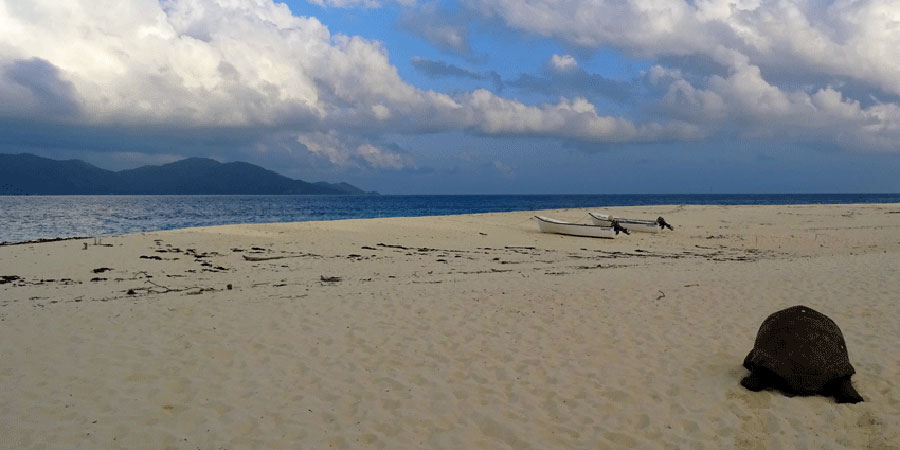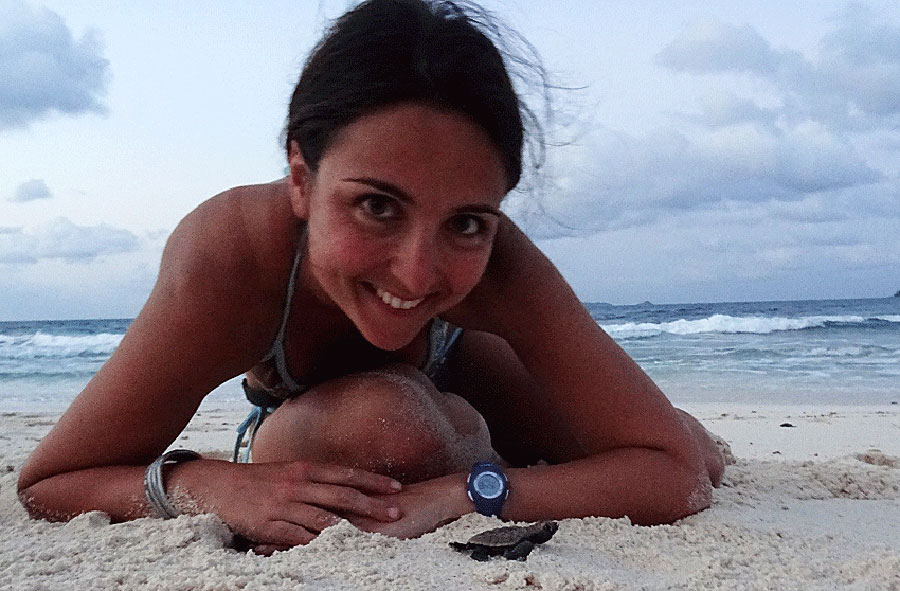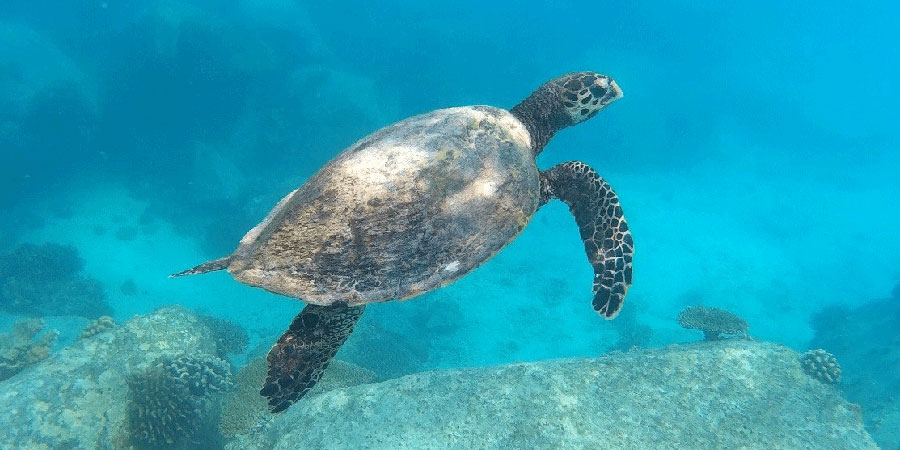
It’s hard to believe that it’s been over a month since I stepped off the boat onto Cousin Island Special Reserve and walked for the first time on its soft and white sand. From home it was quite hard to imagine how life will be here, how the journeys will look like and how will be to see sea turtles so close.
Yes, if you love turtles, as much as I do, this is the place to be!
I remember the first turtle I saw on the first day after my arrival. An 84 cm carapace length turtle decided to nest just in the middle of our main beach, which is not so common for Hawksbill turtles which normally nest in vegetation. I saw her coming out from the water and approaching the beach. She was extremely beautiful, her carapace was shining in the sun and the pattern on it was fantastic. I observed her during all the different steps of the nesting and I waited until she came back into the water, leaving her eggs to their fate.
I can hardly describe my feelings and emotions at that point but when she disappeared into the ocean I realized how lucky I was to be here and that my dream was becoming reality.
My experience with sea turtles had just started!

After a couple of days spent going in patrol with other volunteers to learn how to take carapace measurements, tag details and how to record a nest, my first “alone” patrol arrived. It was the 18th of January and I remember it as my first ‘school day’. I took my patrol bag, after checking several times that all I needed was inside, and and then I set off to Anse Vacoa. I was so excited and kept repeating in my mind “Please turtle come out, come out from the water, I want to meet you”.
On that day I had 3 turtles!
The 20th of January was an amazing day, a day that is etched on my mind. I arrived in Anse Vacoa and I had 4 turtles at the same time, two of them were digging, one was laying and one was camouflaging. I spent more than 2 hours on the beach because one made two aborted chambers before finding the right place to nest. I was so exhausted but I decided to count her eggs. It’s amazing the sensation of having the eggs in your hands, knowing that about 60/70 days later, lovely baby turtles will begin emerging out of the nest and after a lot of effort, will finally make their way to the ocean starting their new adventure.
Two weeks later, I had another amazing experience. As soon as I arrived in Anse Vacoa I saw a turtle that was covering the nest. I approached her to collect the needed data and as soon as I was done, I realized that another turtle was crawling up the beach. So I left to avoid her seeing me. She decided to nest just 40 cm away from the other turtle. When she started laying I took the measurements and once done I moved on the rocks close to the water just to rest a bit before going back home. At a certain point I turned my head to check what she was doing and I saw a lot of small black points moving on the sand. There were about 40 hatchlings that emerged from their nest just a few centimeters away from where the turtle was nesting. It was amazing having such a small area with this much activity.
Unfortunately I didn’t have the camera with me but that image is fixed in my mind.
During the last weeks I also had the possibility to tag a couple of turtles after having been trained by Nature Seychelles science officer Cheryl, and I really enjoyed it.

Turtle nesting season is currently slowing down. We are still supposed to have a couple of them nesting on our beaches but now comes the time for nest excavations and hatchling success analysis.
In the next weeks, we will also start the turtles-in-water monitoring, which will help to monitor juveniles and to identify those areas of the island which are most used by foraging individuals. This kind of study can be very useful in the future for the creation of a management plan that includes in the protection strategy not only the nesting beaches but also the foraging grounds around the island.
During our snorkeling sessions we will try to get as many as possible pictures of the encountered turtles’ facial profiles. Those photos will be an alternative method for recognizing individual turtles because of the different distinct characteristics of each individual which remains the same over time. This photographic identification (photo-ID) can be an alternative and/or an integrated method to the conventional tagging and it allows the identification of each turtle without capturing her. I am really excited about this!
But Cousin Island doesn’t mean only sea turtles. Here you have the possibility to live close to wonderful tortoises and dream with them how it would be being a sea turtle and swimming around the wonderful waters of the Seychelles.
By Alessia Bacchi

